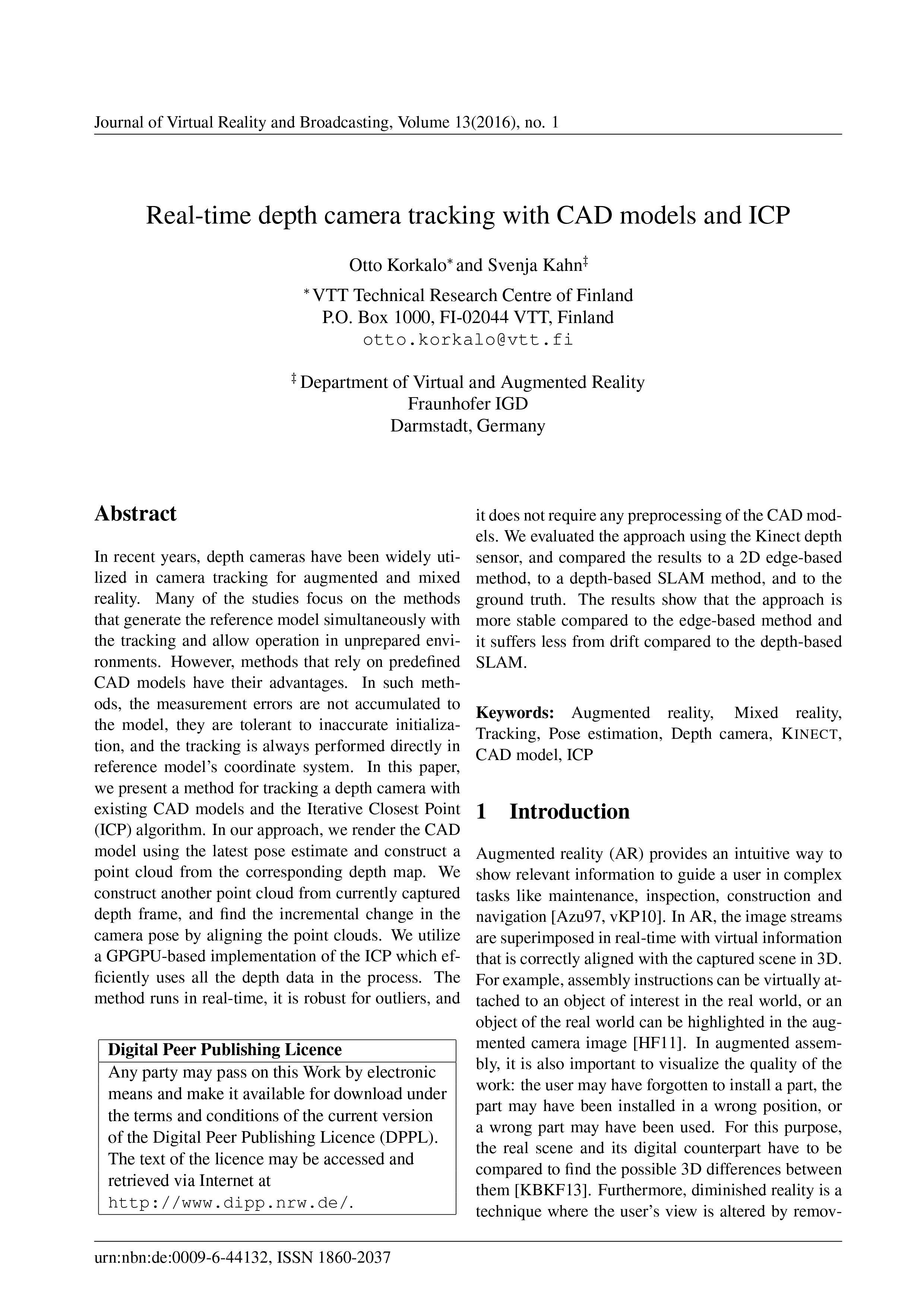Real-time depth camera tracking with CAD models and ICP
DOI:
https://doi.org/10.20385/1860-2037/13.2016.1Keywords:
CAD model, Depth Camera, ICP, KINECT, Mixed Reality, Pose Estimation, TrackingAbstract
In recent years, depth cameras have been widely utilized in camera tracking for augmented and mixed reality. Many of the studies focus on the methods that generate the reference model simultaneously with the tracking and allow operation in unprepared environments. However, methods that rely on predefined CAD models have their advantages. In such methods, the measurement errors are not accumulated to the model, they are tolerant to inaccurate initialization, and the tracking is always performed directly in reference model's coordinate system. In this paper, we present a method for tracking a depth camera with existing CAD models and the Iterative Closest Point (ICP) algorithm. In our approach, we render the CAD model using the latest pose estimate and construct a point cloud from the corresponding depth map. We construct another point cloud from currently captured depth frame, and find the incremental change in the camera pose by aligning the point clouds. We utilize a GPGPU-based implementation of the ICP which efficiently uses all the depth data in the process. The method runs in real-time, it is robust for outliers, and it does not require any preprocessing of the CAD models. We evaluated the approach using the Kinect depth sensor, and compared the results to a 2D edge-based method, to a depth-based SLAM method, and to the ground truth. The results show that the approach is more stable compared to the edge-based method and it suffers less from drift compared to the depth-based SLAM.
Published
2016-08-09
Issue
Section
Articles





